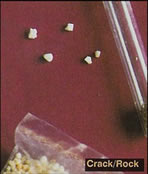 Crack
changed the phenomenon of Child drug whores to coke
whores. The
Nigerian drug dealers setting up shop in Hillbrow; taught our
children within a few months how to make their own crack out
of cocaine. Our main concern is that crack almost quadrupled
America 's population of child prostitutes - Adél du Plessis,
founder of The House and the Hillbrow Drop in Centre
and the I
tombi Shelter, for children under 18. According to drug
counsellors, a trend is emerging in the drug habits of South
African teenagers: in the past they started with cannabis, also
known as marijuana/dagga) and moved off to heavier drugs, but
many are now trying cocaine first. Ms Cathy Karraselos, a clinical
psychologist from the Cape Town Drug Information Centre, said
82% of people that come for help, experimented with drugs before
the age of 20, 13% before their teenage years (Die Burger, 29
June, 1999). The United States Drug Enforcement Administration
(DEA) estimated that crack is the fastest growing drug of abuse
in South Africa (Crime & Conflict,
Spring, 1998). Crack was the main reason for America 's costly drug
wars, but more than 20 years later, cocaine is found on every
continent and in almost every big city in the world. Crack
changed the phenomenon of Child drug whores to coke
whores. The
Nigerian drug dealers setting up shop in Hillbrow; taught our
children within a few months how to make their own crack out
of cocaine. Our main concern is that crack almost quadrupled
America 's population of child prostitutes - Adél du Plessis,
founder of The House and the Hillbrow Drop in Centre
and the I
tombi Shelter, for children under 18. According to drug
counsellors, a trend is emerging in the drug habits of South
African teenagers: in the past they started with cannabis, also
known as marijuana/dagga) and moved off to heavier drugs, but
many are now trying cocaine first. Ms Cathy Karraselos, a clinical
psychologist from the Cape Town Drug Information Centre, said
82% of people that come for help, experimented with drugs before
the age of 20, 13% before their teenage years (Die Burger, 29
June, 1999). The United States Drug Enforcement Administration
(DEA) estimated that crack is the fastest growing drug of abuse
in South Africa (Crime & Conflict,
Spring, 1998). Crack was the main reason for America 's costly drug
wars, but more than 20 years later, cocaine is found on every
continent and in almost every big city in the world.
The roots
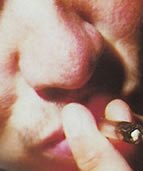 Probably the world's most addictive illicit drug, cocaine is made from the leaves of Erythroxylum coca, called Huanaco, and is primarily cultivated in the eastern and western slopes of the Andes in the Andean region of South America, mainly in Peru, Bolivia and Colombia. Smaller amounts are produced in neighbouring countries including Brazil, Venezuela, Panama and Ecuador . Probably the world's most addictive illicit drug, cocaine is made from the leaves of Erythroxylum coca, called Huanaco, and is primarily cultivated in the eastern and western slopes of the Andes in the Andean region of South America, mainly in Peru, Bolivia and Colombia. Smaller amounts are produced in neighbouring countries including Brazil, Venezuela, Panama and Ecuador .
Peru is the largest producer and supplier of coca leaves in the world, almost two thirds of the world's total cocaine mass. Erythroxylum coca flourishes in altitudes between 500-1 500 metres, a tropical climate, high rainfall, moderate temperature, mineral rich and well-drained soil. The plants grown at higher altitudes contain a higher percentage of the cocaine alkaloids than those at lower altitudes and are consequently more potent. Cocaine content in the leaves ranges from 0,1%-0,9%.
A small amount of coca leaves is officially controlled by the Peruvian government: Coca National Enterprise (ENACO) buys coca leaves for legal sale to pharmaceutical companies and other products like tea mate de coca . Actually there are thousands of unlawful smallholdings from which international drug producers and dealers buy the coca leaves for the production of cocaine, the white powder of death.
The shoots
The cocaine trade hierarchy from farmer to consumer or addict is vast, but well organised. The manufacturing hierarchy can be compared to an upside down pyramid with several levels. For example: Two thousand separate farmers with their labourers cultivate, harvest and dry 45 000 kg leaves and make more or less 375 kg paste. Guides buy paste from 10-12 farmers and sell it to one (usually) buyer. They transport it to their organisation's base lab where the 375 kg paste is converted to 300 kg cocaine base. The process includes several steps, involving soaking the leaves in lime water, extracting the alkaloids with gasoline and precipitating the cocaine by adding hydrochloric acid to the gasoline. (Precipitating = depositing the cocaine in solid form from the solution.) A crystal lab converts it to cocaine hydrochloride, a white powder. The smuggler arranges transportation from several crystal labs. He is the top person in the smuggling network hierarchy. From here cocaine hydrochloride moves down a number of levels to the consumer/addict at the end of the line. At this stage the cocaine has been adulterated to such an extent that 2 500 kg may contain only 12% pure cocaine. In South Africa , 1 gram high quality cocaine hydrochloride (snow) retails at between R250-R280. R250 x 2 500 000 gram = R625 000 000.
Cocaine is available in two forms: cocaine hydrochloride (HCL) (a white powder) and cocaine crystals (crack).
Cocaine hydrochloride (coke, snow, nose candy, charlie, snort, shnaaf, sugar, envelopes, golden dust, lady, toot, white, speedball (when used with heroin)).
 Cocaine HCL is heat labile and water soluble. It is generally dissolved in water and injected intravenously or snorted (sniffed through a straw or folded banknote). Shebanging is the practice of mixing cocaine HCL with water, and then squirting it up the nose with either a syringe or a squeeze bottle. It gives a characteristic numbness where it touches the mouth or throat. Entering the nose, it settles on the walls of the mucous membranes, dissolves almost immediately, and is absorbed through the capillary walls, into the blood stream and to the brain. Effects are within minutes and last for about half an hour. Traditionally cocaine is seen as the rich man's drug. The luxury image may have a relation to the price (R250-280) for 1 gram. Computer boffins, yuppie achievers and musicians use it to feel more alert and energetic, confident and physically strong. Users believe it gives them great mental and creative capacities. Cocaine is highly addictive. In the beginning you take it to feel high and you end up taking it in order not to feel so low. Users quickly build up a tolerance to that euphoric effect and usually the cocaine user never gets as big a high as with the first dose. Cocaine HCL is heat labile and water soluble. It is generally dissolved in water and injected intravenously or snorted (sniffed through a straw or folded banknote). Shebanging is the practice of mixing cocaine HCL with water, and then squirting it up the nose with either a syringe or a squeeze bottle. It gives a characteristic numbness where it touches the mouth or throat. Entering the nose, it settles on the walls of the mucous membranes, dissolves almost immediately, and is absorbed through the capillary walls, into the blood stream and to the brain. Effects are within minutes and last for about half an hour. Traditionally cocaine is seen as the rich man's drug. The luxury image may have a relation to the price (R250-280) for 1 gram. Computer boffins, yuppie achievers and musicians use it to feel more alert and energetic, confident and physically strong. Users believe it gives them great mental and creative capacities. Cocaine is highly addictive. In the beginning you take it to feel high and you end up taking it in order not to feel so low. Users quickly build up a tolerance to that euphoric effect and usually the cocaine user never gets as big a high as with the first dose.
Cocaine crystals/crack (rock, base, freebase, gravel, wash, stone)
All cocaine HCL is potential crack. Crack changed the cocaine scene from an occasional treat for the rich, to a more affordable drug for the middle class. Crack is derived from the processing of cocaine HCL with ammonia or bicarbonate of soda. The result is a crack crystal, looking like little rocks of fudge. It is mostly broken into separate dose weights of approximately 0,1-0,2 gram (smaller than the head of a match). Rocks are heat stable but almost insoluble in water. It's generally smoked by placing the rock into a pipe, glass tube or bottleneck filled with a metallic screen (stem) and vapoured with a lighter. Each dose is separately wrapped for distribution and selling. The name probably comes from the crackling sound that it makes when smoked.
When smoked, cocaine is absorbed into the blood stream through the lung tissue, the most direct route to the brain. Therefore the high/rush is almost instant, less than one minute, much quicker, strongly experienced and subsequently more addictive than snorting, but it diminishes quickly (10-20 minutes). The Americans call it more bang for your money .
Cocaine hydrochloride needs more channels to reach the brain when snorted. Therefore the rush is slower and less intense and experienced for a longer period of time. Rocks are sometimes dissolved (unrocked) in vinegar or lemon juice, and injected.
Crack is becoming increasingly popular. For the mert uncut powder (unadulterated powder) takes less volume than crack, but dealers see a better return in the production and selling of crack. Out of 1 gram of cocaine powder (R250-R280), you can make ten crack doses (R50 - R100 each).
The consumer market is so big that the supplier does not have to use risky strategies to sell. The selling syndicate also operates in a hierarchical structure. The mert at the end is just a small fish, but he engages in the riskier activities. Dealers on the street usually avoid arrest by carrying very small amounts in their mouths. If apprehended by police, the dealer can swallow it easily.
For the addict, using crack is less time consuming than the processes and equipment needed for using cocaine HCL. There is also less risk of an explosion. The effect of smoking crack is comparable to the effect of an intravenous injection. Crack comes cheaper and offers an instant high. The attraction for crack is that initial rush and although the strong crash (comedown) is an anticlimax, the initial effect compels people to return to it. Users usually attempt to maintain the short-lived effects by increasing the doses by binging (using repeatedly for several hours to days). Commonly users combine it with a type of depressant or downer (button/Mandrax) to balance the extreme high, or to edge off the comedown. When the rush wears off, crack-users may be depressed, tired, nervous, irritable and experience intense craving. To get high becomes their only obsession and it destroys all other aspects of life. Cocaine has robbed me of everything I had, and most of all, it had robbed me of self. I didn't know who I was anymore. I didn't care what happened to me - Brenda Mclntyre, former addict. Another former addict said he had sold a diamond ring of three and a half carats for R85 of crack.
The fruits
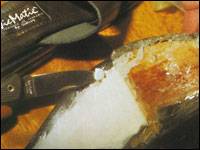 The development of the illicit drug trade is dependent on an interaction between the drug cartel, syndicates, the drug, the dealer, the junkie and the environment. Peasants use the slash and burn agricultural method. A hectare of forest is cut down, and a hectare of coca is planted. The coca plant is the only provider of work for thousands of poor people. Many of these people consider the coca as part of their culture and economical survival. They say production of corn or bananas is not profitable. Roads are impassable or just non-existent whereas coca extract can easily be transported by foot or donkey train. To further complicate the situation, new replacement crops cannot survive where the coca extracted soil nutrients. Toxic chemicals used to transform coca leaves into paste are dumped into the rivers and water is highly polluted. The development of the illicit drug trade is dependent on an interaction between the drug cartel, syndicates, the drug, the dealer, the junkie and the environment. Peasants use the slash and burn agricultural method. A hectare of forest is cut down, and a hectare of coca is planted. The coca plant is the only provider of work for thousands of poor people. Many of these people consider the coca as part of their culture and economical survival. They say production of corn or bananas is not profitable. Roads are impassable or just non-existent whereas coca extract can easily be transported by foot or donkey train. To further complicate the situation, new replacement crops cannot survive where the coca extracted soil nutrients. Toxic chemicals used to transform coca leaves into paste are dumped into the rivers and water is highly polluted.
In the early nineties nearly 40 000 Colombians died due to drug related violence. At least half of the violent crimes in America in the last decade were crack-related (Crime & Conflict, Spring, 1998). In Trinidad, Latin America , the lifestyle has changed from fishing and farming to corruption, violence and addiction as drug consumption increased. Violence and fear are used to control the drug lords' territories. For many it becomes a way of life.
Cheap labour, big profits and corruption on both sides of the law complete the picture. Addicted customers are a never-failing source of income. Dealers know: When you take your first hit, you'll be chasing that hit for the rest of your life.
South Africa
Cocaine HCL (powder) enters South Africa from South America and Europe , mainly through the airports. Capt Stoman (Unit Commander, SANAB, Johannesburg International Airport) said that anything that can contain or can be grooved to contain is used to smuggle. A few methods for example are false compartments in suitcases, in wine/brandy bottles, baby powder containers, babies' diapers, false bottoms in aerosol spray cans, lap tops or printers, false soles in shoes, inside tire rims or the steel tubes of a suitcase or backpack. Syndicates are highly organised. They sell the cocaine contained in a false compartment as a unit. Mules are people who rent out their stomach to transport cocaine filled condoms, more or less ten grams per condom (bullet). Shotgunning refers to a process of running several couriers on a single flight in the hope that one will get through. SANAB Johannesburg International Airport confiscated 30 716 kg of cocaine (powder) in 1994 and 218 070 kg in 1998. According to Capt Stoman, it was approximately 70% pure.
In the country the cocaine is usually cut with sugars and starch. The levels of cocaine purity vary substantially. Dealers are known to spike the rivals' products to scare off their customers. In 1997, units of what were believed to be crack were analysed. Three out of the five active ingredients were found to be that of an antituberculosis drug, Rifiter. You really never know exactly what you buy. In 1997 Chris Wilkens, a 26-year-old investment banker's harmless jol with cocaine cost him his life. The cocaine powder had been cut with poison.
Crack is produced locally. The United States Drug Enforcement Administration DEA) estimate that (crack is the fastest growing drug in South Africa (Crime & Conflict, Spring, 1998). The statistics of the SAPS different units confirms it. The cocaine mass SANAB confiscated in 1994 was 69 563 kg powder and in 1998, 635 208 kg powder and 3 825 crack/rocks. (Please note that the figures given here do not reflect the quantity of drugs confiscated by members of the Uniform or Organised Crime Branch). According to Supt Brits (Unit Commander, SANAB, Johannesburg) from 1 January to 31 May 1999 they confiscated 339 kg of cocaine HCL and 830 crack/rocks. In the same period last year 183 kg and 617 crack/rocks were found. Supt Andre Koch of the SAPS Forensic Laboratory (FSL) in Pretoria says in 1993 cocaine cases formed1% of the total number of cases. In 1999 it has been 25% so far. Until 1995 cocaine HCL formed the majority of cocaine cases. At the moment 75% of cocaine related cases involve crack. According to Supt Venter from the FSL in the Cape , they have found two clandestine factories (crack labs) this year - one with crack of a street value of more or less R1,3 million.
There is a noticeable increase in the proportion of people in treatment whose primary substance abuse is cocaine or crack. If alcohol is removed from the list of primary drugs of abuse, then Cape Town 's figures rise from 6% - 22%. Smoking is the most common mode of ingesting crack (Parry, C D &H Pluddemann, 1999 , Drug abuse in South Africa : A Country Profile. Parow Medical Research Council , hereafter referred to as Medical Research Council technical report 1999} Elmien Brits, Managing Director of Phoenix House Rehabilitation Centre, said 13 out of their15 inpatients primary substance of abuse is cocaine and crack.
The Nigerian Stuffers and Swallowers
The Nigerians are recognised as the hub of illicit drug trafficking in South Africa. According to The United States Drug Enforcement Administration (DEA), Nigerian traffickers are responsible for an estimated 80% of the cocaine traffic (transport, wholesale and retail sectors). The first Nigerian drug traffickers in South Africa were detected in the last three months of 1992. Approximately 45 000 to 100 000 Nigerians are living in South Africa. They are concentrated primarily in Gauteng, especially in Hillbrow, Yeoville and Berea . According to the Nigerian High Commission there are only 600 legally registered Nigerians in South Africa . The DEA further said primary couriers arrested in South Africa are Nigerians and Ghanaians (Crime & Conflict, Spring, 1998). Insp. Bendeman of Hillbrow SAPS confirmed that there are many Nigerians with refugee status or temporary work permits. Nigerians arrested on drug charges in 1998 at SANAB Johannesburg, amounted to 180 out of 650 suspects. Capt Stoman said they dubbed Nigerian smugglers stuffers and swallowers because they ingest or insert into body cavities between 60 - 99 bullets , each containing around ten grams of cocaine. The reward of a successful run outweighs the risk of a burst condom that can kill the courier (mule) with a massive overdose.
 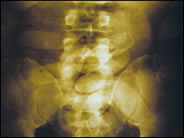
Nigerian syndicates are also involved in many other forms of international criminal activity. According to Supt Das Neves (Unit Commander of SANAB West Rand who has served 17 years in the SAPS, and is currently doing a doctorate in Criminal Justice at Hawthorne University), 60% of women prisoners in London are Nigerians. An article in the Reader's Digest of May 1999 titled: Africa's Drug Threat: the Nigerian connection, mentions that Nigerian organised criminals are active in no fewer than 60 countries. Law enforcement identified the first Nigerian traffickers in India in the early 1980s, who recruited students to smuggle heroin from India to Europe and the US. Nigerian gangs have forged loose alliances with the Columbian cartels, the Russian Mafia and the Chinese Triads. Few law enforcement officers in the West or Asia know the tribal languages they speak.
Nigerians are, generally smart, clever, good looking and loyal to one another. They have sophisticated trafficking skills and are because of that, attractive business partners. Most of the time, they have many different passports and identities. In Hillbrow they have their own Nigerian City. On almost every street corner, they are loitering, waiting for a customer. Nigerians successfully recruit locals to sell drugs. A member of SANAB said Nigerians continue running the drug trade even in jail. The only difference is that it's in hard cash.
As said in a previous article, until about four years ago Nigeria meted out the death penalty to drug dealers. Today the minimum penalty is 25 years in jail. South Africa 's maximum penalty for dealing in illicit drugs is 25 years.
The Nigerians are laughing at us and say: It is payback time! This government will never do anything against us - Adel du Plessis.
The sex trade
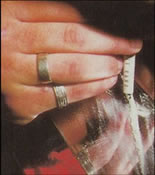 For many users their cocaine addiction started and ended with sexual favours for money or drugs. Cocaine had taken the heart out of my body - former drug addict. According to Adel du Plessis, crack changed the prostitutes scene in more ways than one. Before, prostitutes used buttons (Mandrax) and pinks (Wellconal), both downers, to ease the physical, emotional and psychological pain of their trade. Although the button heads look a bit down on the pinks (because Wellconal is more expensive and subsequently they must work more to buy a hit), they look after one another. If one becomes too sick, or too old to beat , they have methods to get her a steamer (a customer). Crack is a stimulant, an upper. Violence and aggression become the answer to settle problems or arguments. The sex buyer sometimes becomes more important than the sisterhood . Sex buyers are cool when they are also crack addicts. For many users their cocaine addiction started and ended with sexual favours for money or drugs. Cocaine had taken the heart out of my body - former drug addict. According to Adel du Plessis, crack changed the prostitutes scene in more ways than one. Before, prostitutes used buttons (Mandrax) and pinks (Wellconal), both downers, to ease the physical, emotional and psychological pain of their trade. Although the button heads look a bit down on the pinks (because Wellconal is more expensive and subsequently they must work more to buy a hit), they look after one another. If one becomes too sick, or too old to beat , they have methods to get her a steamer (a customer). Crack is a stimulant, an upper. Violence and aggression become the answer to settle problems or arguments. The sex buyer sometimes becomes more important than the sisterhood . Sex buyers are cool when they are also crack addicts.
In Pretoria a sex worker didn't have problems to payoff R5 000 for crack on credit (take it on tick). She just needed one night's business. A mother phoned Supt Brits and asked if they still arrested prostitutes; she wanted to use her 13-year-old daughter for prostitution.
A study by Pauw in 1997 in Cape Town found that of 25 sex workers, 84% were regular drug users. The most common substances used by sex workers are alcohol, crack and white pipes. Contracting HIV/AIDS is more likely to be due to unsafe sex, or a weakened immune system due to drug use (Medical Research Council technical report 1999).
In Cape Town the majority of street prostitutes appear to use drugs regularly. The growing amount of crack cocaine on the street may be as high as 80%. An informant estimates nearly all the street girls in Durban are addicted to crack cocaine. Mandrax, and the synthetic opiate Wellconal are also used, but the drug of choice is crack. Addicted girls come cheap and accept R20 for sex (Crime & Conflict , Spring, 1998).
The crack can enable them to work for 36-38 hours at a time. There will never be enough money for crack. With crack there is not a saturation point. As soon as you come down you need the next hit. They buy a button to ease off hitting the bottom . Drug prices depend on demand and supply and the price of a button increased from R17 R50. The long hours make them more vulnerable to violence and abuse, and the drug's disinhibitory effect can lead to impaired judgement and unsafe sex. Sex workers use crack to assist in overcoming feelings of guilt, shame, depression and suppressed anger to which they are subject while plying their trade. It is a never ending cycle of serving the client, buying drugs, smoking it with their boyfriends or pimps and returning to the street.
An economic strangler for the user
Cocaine is an expensive illegal drug. According to Supt G P J Grobbelaar (SANAB, Durban ), one gram of regular cocaine costs (conservative price) R150 in the Durban region. Most drug addicts use at least 1 gram a day: 30 x R150 = R4 500 per month.
Cocaine habit R 4 500
Housing R 3 000
Food and drink R 1 000
Clothing R 300
Transport R 400
Total R 9 200
The average salary in Durban is R5 000. The cost of the cocaine habit alone almost exceeds the salary. The implications are that the user turns to crime, prostitution, etc. to sustain the habit. Irrespective of age, the person who is charged with possession of or dealing in illicit drugs, will have a criminal record for life.
The high cost of getting high
Powder and crack cocaine are similar in their physical and psychological effects. It will vary according to the dose and the user's tolerance. Crack's potential for dependency is greater than that of cocaine HCL and the consequences more severe. Crack is more associated with violence. Chronic users tend to do little else than smoke crack.
Problems associated with injections
Aids, hepatitis, skin infections, damage to blood vessels and organs, weight loss (this can occur with any method of chronic use), salmon coloured bruises (sometimes with a clear central zone around the needle puncture site).
Signs of dependence
Involuntary movement and twitching, unnatural excitement, loss of appetite, pale face, intravenous users have multiple bruises, insomnia, rapid pulse, rash and overconfident behaviour, (crack) anger and severe aggression. The user begins to rely on the drug to feel good.
Withdrawal symptoms
Intense drug cravings, increased appetite, irritability, apathy, depression, paranoia, anxiety, suicidal ideas, loss of libido, cramps in muscles, loss of energy, shaking, palpitations, sweating, hyperventilation, insomnia/excessive sleep. Often more cocaine is taken to reduce these effects.
Overdose symptoms
Agitation, hallucinations, hostility, convulsions, high temperature, stroke or heart attack, possible death.
The South African government should treat this assault for what it is - a genuine threat to national security - Ted Legget in Crime & Conflict, Spring, 1998.
Did you know
- South American civilisations have been chewing cocoa leaves since 3000 BC as a stimulant to work longer and to alleviate the effects of the high altitude, hunger and cold.
- Today cocoa leaves are still an indispensable element in the Andean region.
- The cocoa leaf is used for medicinal, cultural and religious purposes.
- In 1855, pure cocaine was first extracted and used as a local anaesthetic.
- Popes and royalty enjoyed cocoa laced wine in the 19 th century.
- Until 1994, Coca Cola contained small amount of cocaine.
- The popular American tea mate de coca is made from the cocoa plant's leaves.
- A cocoa paste, basuco , is smoked in countless countries where the plants grow.
- Cocaine is also used as a local anaesthetic in dentistry and for eye or nose surgery.
Effects of cocaine and crack on the human body
Brain
- Relaying of false information (making one feel one is not hungry, tired etc).
- Extreme and rapid mood swings, panic attacks.
- Negative evaluation of self and inability to experience pleasure creating a cycle of use driven by the desire to enter the depressed withdrawal state.
- Depression, paranoia, hallucinations for example sensation of worm-like things crawling under the skin.
- Blood vessels (arteries) become constricted – impaired concentration and memory loss.
- Craving. The urge to use more can begin as soon as the crack is finished.
- A sensation of butterflies in the stomach, feeling of queasiness, chills and increase in salivation.
Eyes
- Crack keratitis: because cocaine is a local anaesthetic, corneas may inadvertently be anaesthetised. When rubbing the eye, the user may damage the cornea.
- Dilated pupils with loss of accommodation resulting in impaired vision.
Nose
- Constriction of the blood vessels results in inadequate nourishment of the tissues with ulceration the nasal septum.
- Loss of sense of smell and nose bleeds.
- Sinus problems
Mouth
- Bite marks on the lips and tongue.
- Dry mouth.
- Hoarseness.
- Erosions on the enamel of the upper front teeth.
- Problems with swallowing.
Heart
- Increased heart beat.
- Chest pains.
- Possible heart attack.
- Changes in heart rate.
- Strokes.
- Elevation in blood pressure.
- Sudden death.
Lungs
- Breathing problems.
- Susceptibility to respiratory infections which leads to bleeding in the lungs with coughing up of blood.
- Respiratory infections often become chronic
- Damage to respiratory membranes
Hands
- Cracked skin - blackened, multiple small burns.
- Crack thumb" - from using disposable cigarette lighters to heat their pipes.
- Overuse can lead to arthritis and tendonitis
Pregnancy
- Reduced foetal head circumference (widespread brain damage).
- Reduction in birth weight.
- Increase in stillbirth rates as well as cot deaths.
- Spontaneous miscarriages.
- Congenital malformations.
- Drug withdrawal symptoms in the newborn infant.
The information in this article has been transcribed verbatim from the following publication:
Servamus – Community edition – Drugs and Occult Related Crime – The Facts – The Answer.
We express our heartfelt gratitude for permission to replicate these articles on this website.
Published by:
SARP Publishers
Private Bag X24
Elardus Park
0047
South Africa
Editor: Annalise Kempen
Tel: +27 (0)12 345 4622 / 4660
Fax: +27 (0)12 345 5627
Cell: +27 (0)83 269 3513
Email: annalise@servamus.co.za
Web: www.servamus.co.za
For copies of this excellent and significant publication, please contact Servamus at the above contact details. |

